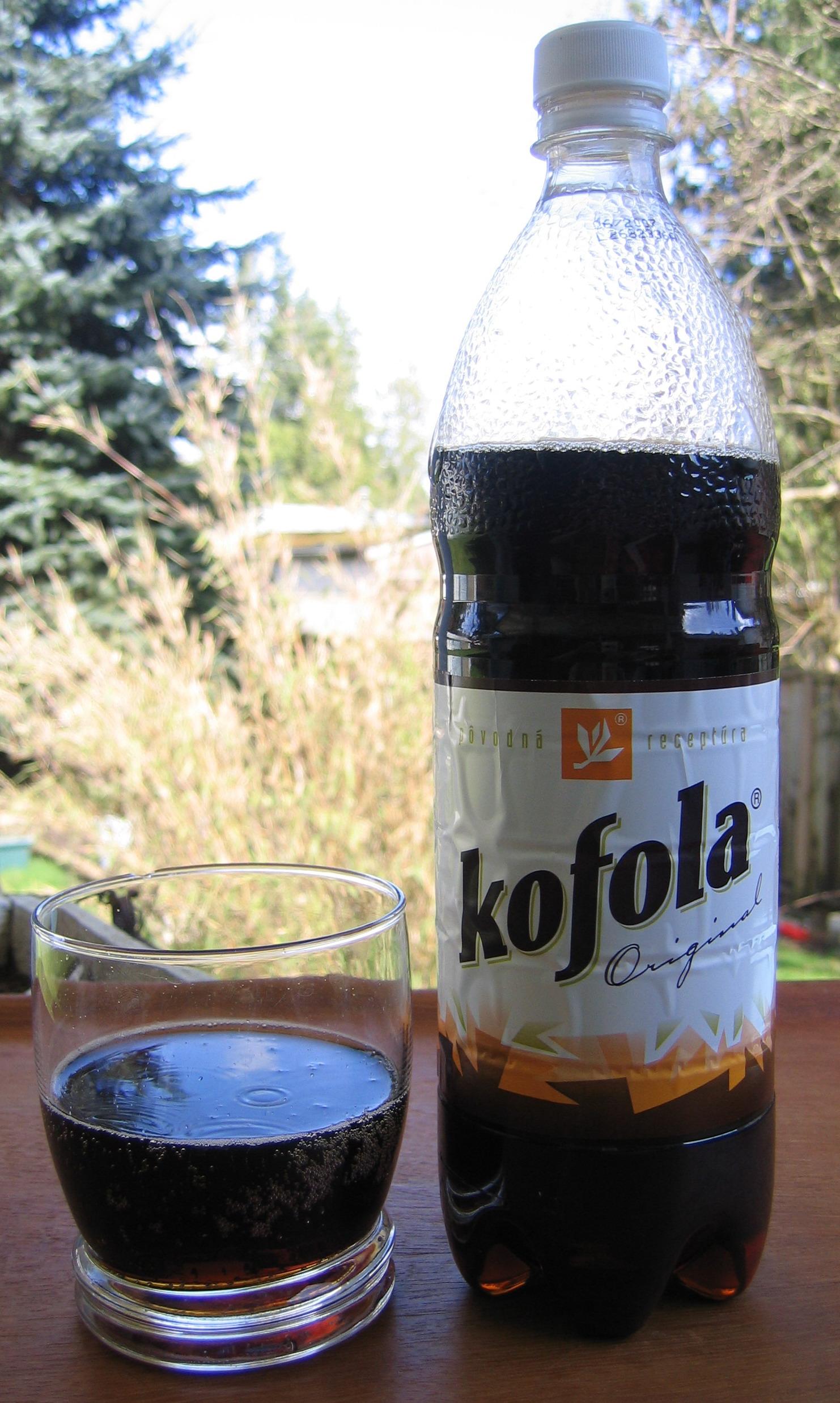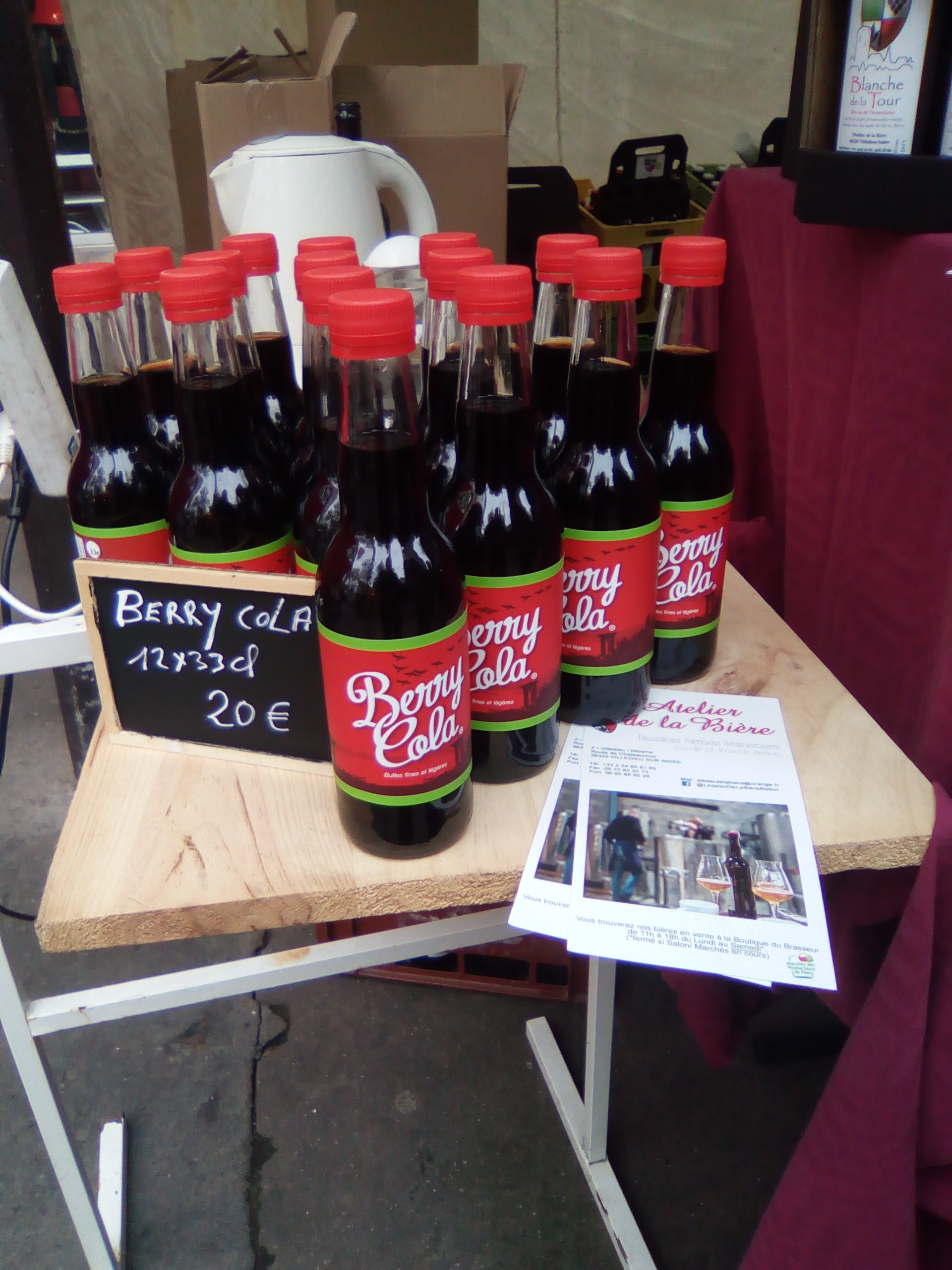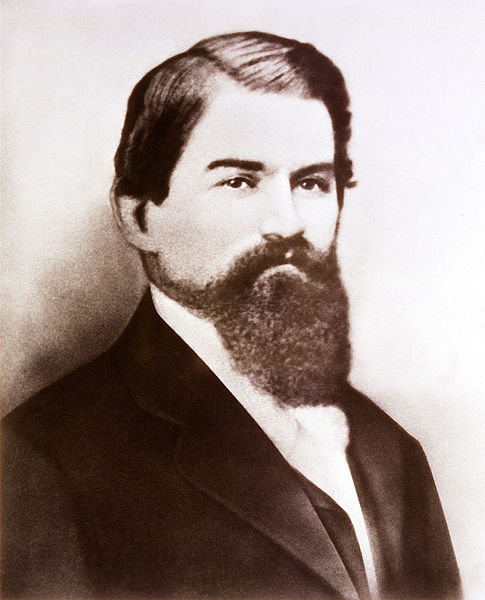|
Kofola
Kofola () is a carbonated soft drink produced by the eponymous Czechoslovak company, which is headquartered in Krnov, Czech Republic. It is the principal rival of Coca-Cola and Pepsi in the Czech Republic and Slovakia. The company is one of the leading soft drink producers and distributors in Central Europe, Central and Eastern Europe. History Kofola originated in the Czechoslovakia, Czechoslovak Research Institute of Medicinal Plants in Prague in 1959, during research targeted at finding a possible use for surplus caffeine produced in the process of Coffee (drink), coffee roasting. The resulting dark-coloured, sweet-and-sour syrup ''Kofo'' became the main ingredient of a new soft drink named ''Kofola'', introduced in 1960. During the 1960s and 1970s, Kofola became exceedingly popular in communist Czechoslovakia, successfully competing with Western cola drinks like Coca-Cola or Pepsi, which were generally available after 1968 (Pepsi in 1974), but were expensive and considered as ... [...More Info...] [...Related Items...] OR: [Wikipedia] [Google] [Baidu] |
Semtex (drink)
Semtex is a brand of energy drink manufactured in the Czech Republic by Pinelli since 1995, and was the first such drink to be produced in the country. The drink gained notoriety after taking its name from Semtex, a well-known plastic explosive, which is also of Czechoslovak origin. History Semtex was introduced in 1995 by the Pinelli company, which had been formed in 1993 in the town of Čáslav, and which also produced juices and fruit drinks. Over the following decade, Red Bull became the market leader in both the Czech Republic and neighbour Slovakia, with Semtex the second strongest seller, providing Pinelli with most of its sales. Semtex was also exported to Hungary, Austria, Germany and Russia. On 22 April 2011, Pinelli was taken over by the Kofola Group, the largest soft drinks producer in the Czech Republic. In 2005, Russia's consumer protection agency refused to extend Semtex's production licence due to fears that it could be harmful to consumers' health. New regulations ... [...More Info...] [...Related Items...] OR: [Wikipedia] [Google] [Baidu] |
Krnov
Krnov (; , or ''Krnów'') is a town in Bruntál District in the Moravian-Silesian Region of the Czech Republic. It has about 23,000 inhabitants. Administrative division Krnov consists of three municipal parts (in brackets population according to the 2021 census): *Pod Bezručovým vrchem (14,445) *Pod Cvilínem (7,099) *Krásné Loučky (573) Geography Krnov is located about northwest of Opava and northwest of Ostrava, in the historic region of Czech Silesia on the border with Poland. The town is situated at the confluence of the rivers Opava (river), Opava and Opavice. The northern part of the territory with the town proper lies in the Opawskie Mountains, Zlatohorská Highlands, the western and the southern part lie in the Nízký Jeseník range. A small part on the southeast extends into the Opava Hilly Land. The highest point is the hill Bednářský vrch at above sea level. History The first written mention of Krnov is from 1240. At the latest in 1269 and probably alrea ... [...More Info...] [...Related Items...] OR: [Wikipedia] [Google] [Baidu] |
Vinea (soft Drink)
Vinea is a carbonated grape-based soft drink invented in Czechoslovakia in 1973 by Slovak Ján Farkaš, a biochemist working for the Research Institute for Viticulture and Wine-making in Bratislava. Production of the drink began in 1974. After years of trademark ownership disputes, Vinea was sold to Kofola Kofola () is a carbonated soft drink produced by the eponymous Czechoslovak company, which is headquartered in Krnov, Czech Republic. It is the principal rival of Coca-Cola and Pepsi in the Czech Republic and Slovakia. The company is one of the l ... in January 2008.http://www.neurope.eu/articles/83441.php References Grape sodas Products introduced in 1973 Slovak drinks Soft drinks {{Soft-drink-stub ... [...More Info...] [...Related Items...] OR: [Wikipedia] [Google] [Baidu] |
Czech Republic
The Czech Republic, also known as Czechia, and historically known as Bohemia, is a landlocked country in Central Europe. The country is bordered by Austria to the south, Germany to the west, Poland to the northeast, and Slovakia to the southeast. The Czech Republic has a hilly landscape that covers an area of with a mostly temperate Humid continental climate, continental and oceanic climate. The capital and largest city is Prague; other major cities and urban areas include Brno, Ostrava, Plzeň and Liberec. The Duchy of Bohemia was founded in the late 9th century under Great Moravia. It was formally recognized as an Imperial Estate of the Holy Roman Empire in 1002 and became Kingdom of Bohemia, a kingdom in 1198. Following the Battle of Mohács in 1526, all of the Lands of the Bohemian Crown were gradually integrated into the Habsburg monarchy. Nearly a hundred years later, the Protestantism, Protestant Bohemian Revolt led to the Thirty Years' War. After the Battle of White ... [...More Info...] [...Related Items...] OR: [Wikipedia] [Google] [Baidu] |
Rajecká Lesná
Rajecká Lesná (formerly ; , until 1906 ) is a village and municipality in Žilina District in the Žilina Region of northern Slovakia. History In historical records, the village was first mentioned in 1474. Rajecka Lesna has been a place of pilgrimage since the 15th century. The largest pilgrimage takes place on 8 September, the feast of Virgin Mary's Nativity. Geography The municipality lies at an altitude of 513 metres and covers an area of 39.264 km². It has a population Population is a set of humans or other organisms in a given region or area. Governments conduct a census to quantify the resident population size within a given jurisdiction. The term is also applied to non-human animals, microorganisms, and pl ... of about 1300 people. External links * http://www.statistics.sk/mosmis/eng/run.html Slovak Betlehem - Official pagesOfficial pages of local RCC Villages and municipalities in Žilina District {{Žilina-geo-stub ... [...More Info...] [...Related Items...] OR: [Wikipedia] [Google] [Baidu] |
Cola
Cola is a Carbonation, carbonated soft drink flavored with vanilla, cinnamon, citrus essential oil, oils, and other flavorings. Cola became popular worldwide after the American pharmacist John Stith Pemberton invented Coca-Cola, a trademarked brand, in 1886, which was imitated by other manufacturers. Most colas originally contained caffeine from the kola nut (''Cola acuminata''), leading to the drink's name, though other sources of caffeine are generally used in modern formulations. The Pemberton cola drink also contained a coca leaves, coca plant extract. His non-alcoholic Coca-Cola formula, recipe was inspired by the coca wine of pharmacist Angelo Mariani (chemist), Angelo Mariani, created in 1863. Most modern colas have a dark caramel color and are sweetened with sugar, high-fructose corn syrup or artificial sweeteners. There are numerous different brands of cola, with Coca-Cola and Pepsi-Cola being among the most popular. These two colas have been competitors since the 1890s, ... [...More Info...] [...Related Items...] OR: [Wikipedia] [Google] [Baidu] |
Coca-Cola
Coca-Cola, or Coke, is a cola soft drink manufactured by the Coca-Cola Company. In 2013, Coke products were sold in over 200 countries and territories worldwide, with consumers drinking more than 1.8 billion company beverage servings each day. Coca-Cola ranked No. 94 in the 2024 Fortune 500, ''Fortune'' 500 list of the List of largest companies in the United States by revenue, largest United States corporations by revenue. Based on Interbrand's "best global brand" study of 2023, Coca-Cola was the world's List of most valuable brands, sixth most valuable brand. Originally marketed as a temperance bar, temperance drink and intended as a patent medicine, Coca-Cola was invented in the late 19th century by John Stith Pemberton in Atlanta, Georgia. In 1888, Pemberton sold the ownership rights to Asa Griggs Candler, a businessman, whose marketing tactics led Coca-Cola to its dominance of the global soft-drink market throughout the 20th and 21st centuries. The name refers to t ... [...More Info...] [...Related Items...] OR: [Wikipedia] [Google] [Baidu] |
Polo Cocta
Polo-Cockta (sometimes written as ''Polo Cockta'' or ''Polo-Cocta'') is a Polish cola drink introduced in the 1970s. Polo-Cockta was introduced as a substitute for the original Coca-Cola, which was unavailable in Polish shops due to limits on exports from the US to soviet bloc countries. At first it was based on Cockta, a very popular drink from Slovenia (then SFR Yugoslavia). Polo-Cockta was discontinued during the 1980s, but has been revived for a few years by a private company Zbyszko which acquired all the rights to the brand, reacting to the ever-popular demand for Polska Rzeczpospolita Ludowa, PRL-stylised products, an element of "PRL nostalgia". The taste of Polo-Cockta is sometimes described as a mixture of Coca-Cola and Pepsi. For a while Polo-Cockta was renamed Polo Cola, without change to the product. However, in 2016, Polo Cola was renamed back to Polo-Cockta. Polo-Cockta has made a significant appearance in the Polish film ''Kingsajz'' by Juliusz Machulski, where it ... [...More Info...] [...Related Items...] OR: [Wikipedia] [Google] [Baidu] |
Soft Drink
A soft drink (see #Terminology, § Terminology for other names) is a class of non-alcoholic drink, usually (but not necessarily) Carbonated water, carbonated, and typically including added Sweetness, sweetener. Flavors used to be Natural flavor, natural, but now can also be Artificial Flavoring, artificial. The sweetener may be a sugar, high-fructose corn syrup, fruit juice, a sugar substitute (in the case of diet sodas), or some combination of these. Soft drinks may also contain caffeine, Food coloring, colorings, preservatives and other ingredients. Coffee, tea, milk, cocoa, and unaltered fruit and vegetable juices are not considered soft drinks. Soft drinks are called "soft" in contrast with "hard" alcoholic beverages, alcoholic drinks. Small amounts of alcohol (drug), alcohol may be present in a soft drink, but the Alcohol by volume, alcohol content must be less than 0.5% of the total volume of the drink in many countries and localities See §7.71, paragraphs (e) and (f). ... [...More Info...] [...Related Items...] OR: [Wikipedia] [Google] [Baidu] |
Open Market
The term open market is used generally to refer to an economic situation close to free trade. In a more specific, technical sense, the term refers to interbank trade in securities. In economic theory Economists judge the "openness" of markets according to the amount of government regulation of those markets, the scope for competition, and the absence or presence of local cultural customs which get in the way of trade. In principle, a fully open market is a completely free market in which all economic actors can trade without any external constraint. In reality, few markets exist which are open to that extent, since they usually cannot operate without an enforceable legal framework for trade which guarantees security of property, the fulfillment of contractual obligations associated with transactions, and the prevention of cheating. A physical open market is a space where anyone wishing to trade physical goods may do so free of selling charges and taxes, and has come to be regar ... [...More Info...] [...Related Items...] OR: [Wikipedia] [Google] [Baidu] |
Croatia
Croatia, officially the Republic of Croatia, is a country in Central Europe, Central and Southeast Europe, on the coast of the Adriatic Sea. It borders Slovenia to the northwest, Hungary to the northeast, Serbia to the east, Bosnia and Herzegovina and Montenegro to the southeast, and shares a maritime border with Italy to the west. Its capital and largest city, Zagreb, forms one of the country's Administrative divisions of Croatia, primary subdivisions, with Counties of Croatia, twenty counties. Other major urban centers include Split, Croatia, Split, Rijeka and Osijek. The country spans , and has a population of nearly 3.9 million. The Croats arrived in modern-day Croatia, then part of Illyria, Roman Illyria, in the late 6th century. By the 7th century, they had organized the territory into Duchy of Croatia, two duchies. Croatia was first internationally recognized as independent on 7 June 879 during the reign of Duke Branimir of Croatia, Branimir. Tomislav of Croatia, Tomis ... [...More Info...] [...Related Items...] OR: [Wikipedia] [Google] [Baidu] |




